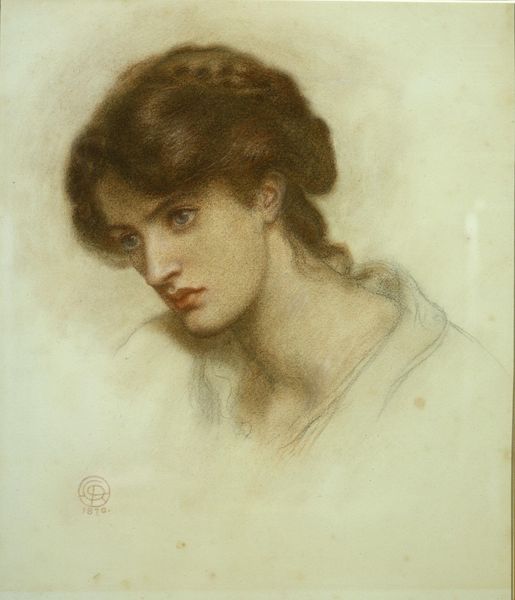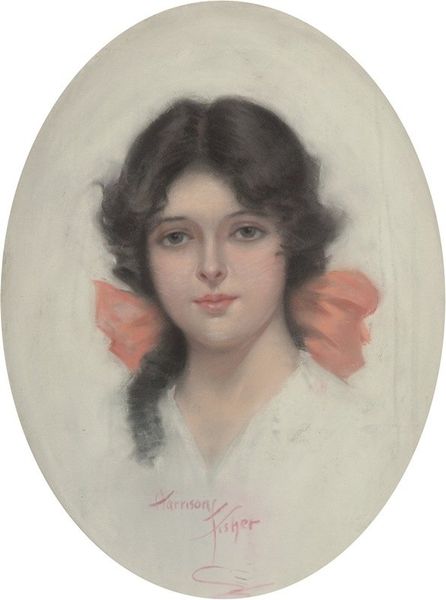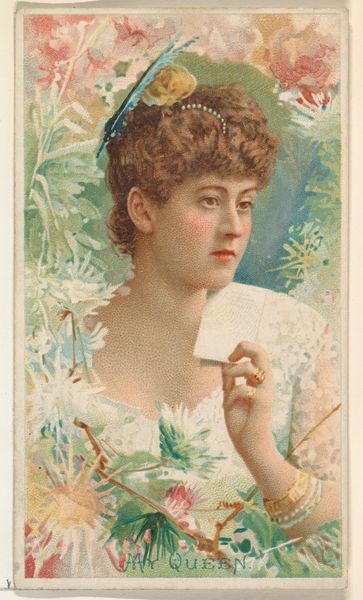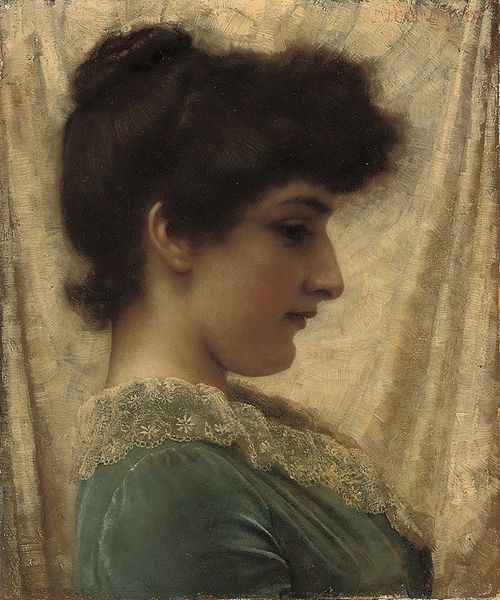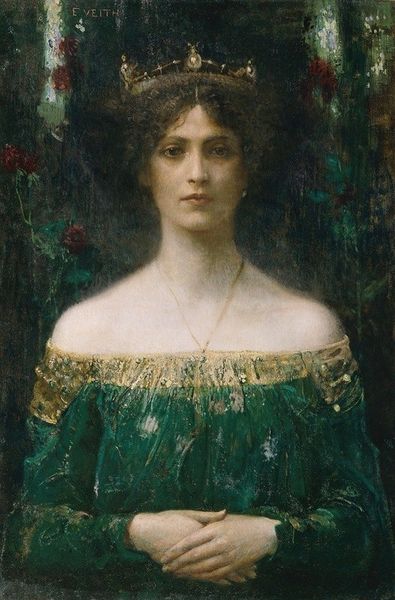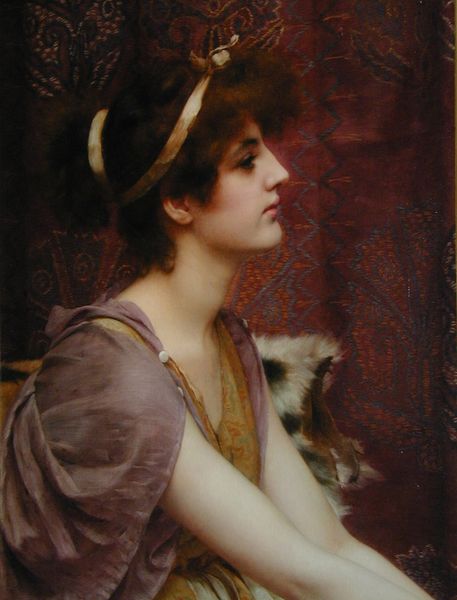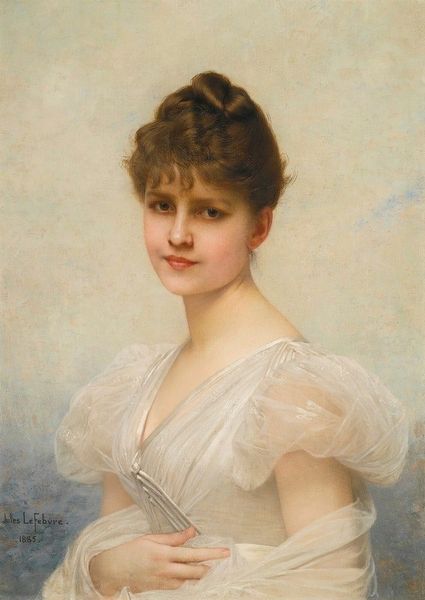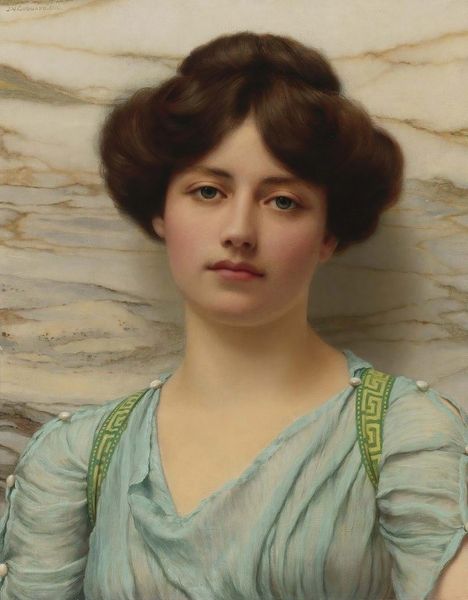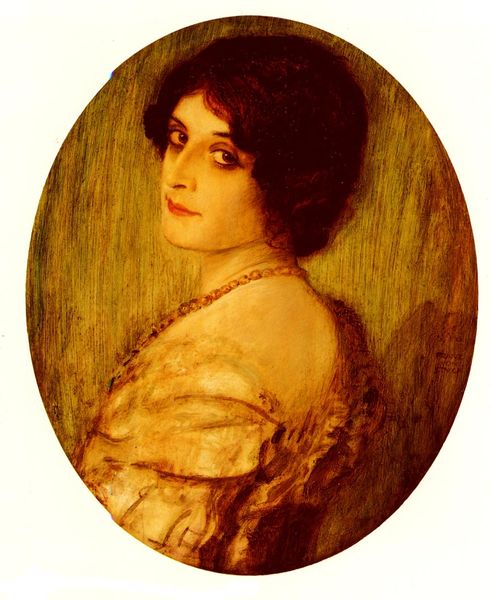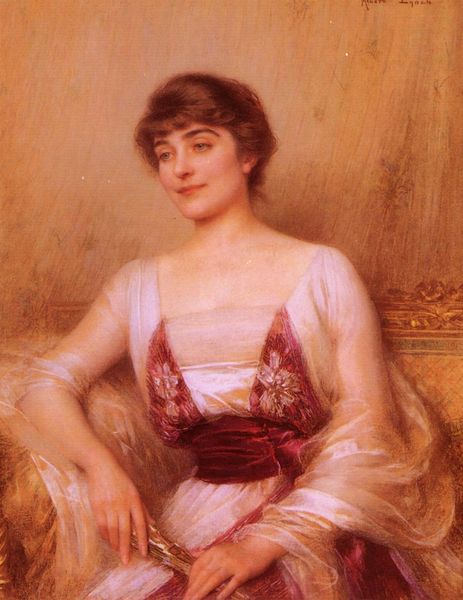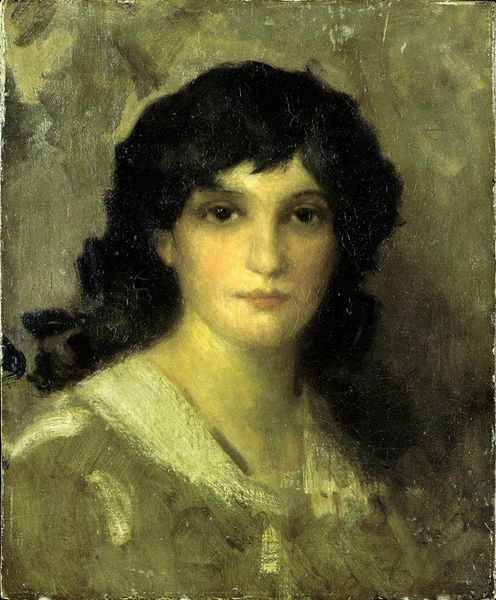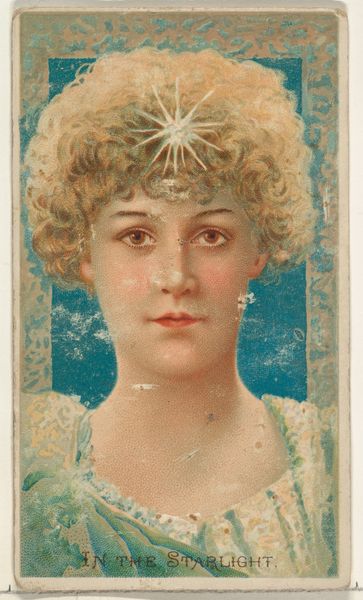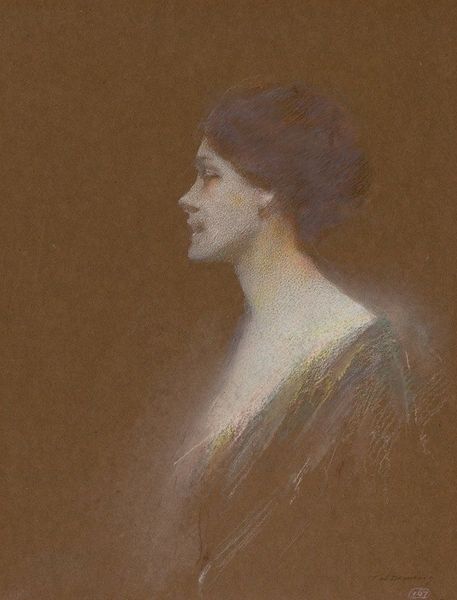
Copyright: Public Domain: Artvee
Editor: Here we have Alphonse Mucha's "Portrait of a Young Woman in Folk Costume," created in 1921 using oil paints. The delicate color palette and the subject's gentle expression give the artwork a very dreamy and serene quality. What do you see in this piece, especially considering Mucha’s background? Curator: Well, the 'folk costume' isn’t just clothing; it's a conscious claiming of identity, of rootedness in a specific cultural narrative. Given that this was painted shortly after Czechoslovakia gained independence, this portrait, bathed in soft light, might signify a collective yearning for cultural reaffirmation. Consider the flowers on her shawl – do they point to specific regions, carrying coded messages of belonging and resilience? Editor: That's fascinating, I hadn't thought about it as a political statement. So you're saying the costume isn’t just aesthetic, but symbolic? Curator: Exactly! Every visual element contributes to this sense of symbolic weight. The oval shape containing her figure recalls classical portraiture, creating a connection to tradition. Yet, the dreamy quality softens that tradition, inviting a modern, almost wistful interpretation. The woman's gaze meets ours directly, but her slight smile suggests an internal world. What story does she hold? Editor: It's amazing how Mucha layers meaning into something that appears so simple. Curator: Indeed. And the light—notice how it illuminates her face but leaves the background ambiguous? It places the emphasis on her interiority, the very essence of her being. The red accents embroidered in the clothing might denote her readiness for courtship. What about that tiny bit of exposed neck; doesn’t that convey her gentle but forthright gaze. This image serves as a mirror, asking us about the weight of our own histories. Editor: I'll never look at folk costumes the same way again! This portrait opens up so many avenues to understanding cultural identity. Curator: It’s a powerful reminder that what we wear, what we choose to represent, holds deep personal and communal narratives, shaped by history and memory.
Comments
No comments
Be the first to comment and join the conversation on the ultimate creative platform.
